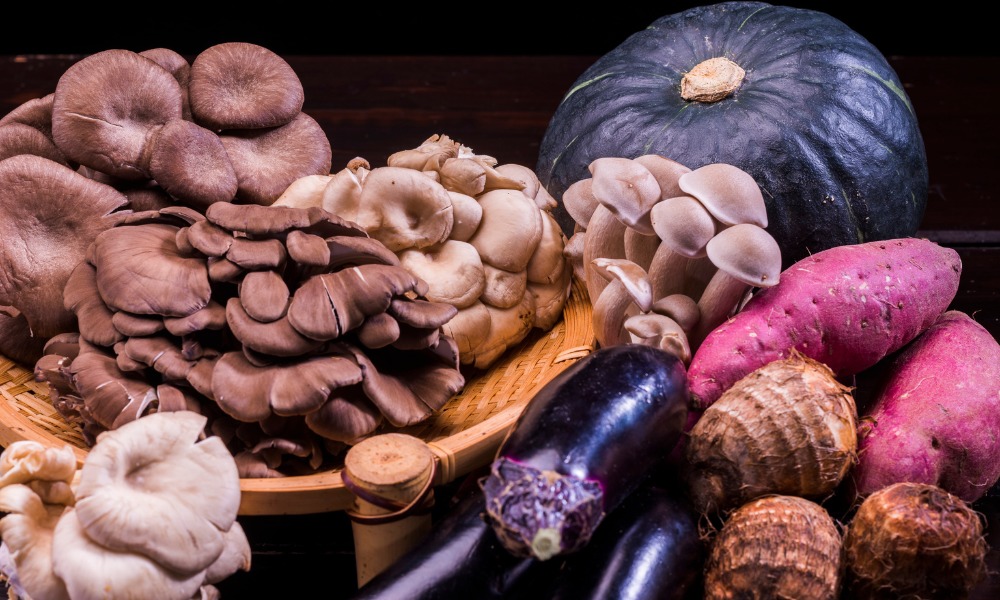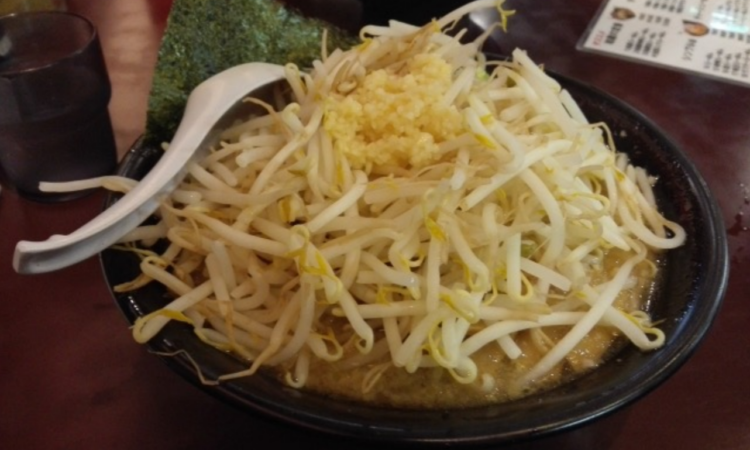September marks the season change to Autumn, as the weather cools down slightly to an average of the high 20s. People in Japan are not only excited about the leaves changing to shades of yellow, orange, and brown but there is a love for the abundance of Autumn vegetables available.
Eat Seasonally With These Autumn Vegetables and Foods
This love of vegetables is arguably greater than other seasons because of all the seasonal flavoured snacks you can find in the convenience store at this time of year. Let’s look at what Japan has to offer, starting with the favourite.
Sweet Potato
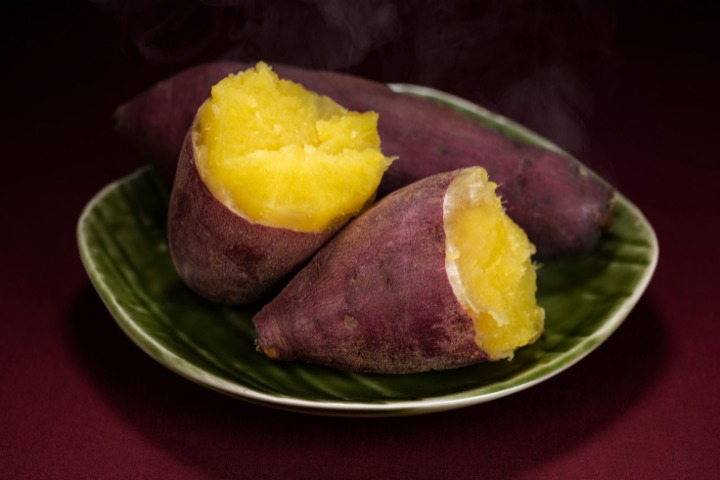
Image Credits: Canva
The smell of baked sweet potatoes lingers at the entrance of supermarkets and on the streets and may be accompanied by a children’s tune about the delicious treat. Sweet potatoes in Japan look nothing like those I’m familiar with back in Australia. Rather than the orange tone inside and out, the Japanese sweet potato has purple skin and whitish-yellow flesh.
Baking the sweet potatoes is a popular choice. Just wrap it up in foil and put it in the oven. If you don’t have an oven, like so many families in Japan, you can steam the sweet potatoes to get that same creamy consistency. Another delicious use for sweet potato is to cook it with rice. Cut up the raw potato into bite-sized pieces and put it in the rice cooker, along with your rice.
Pumpkin
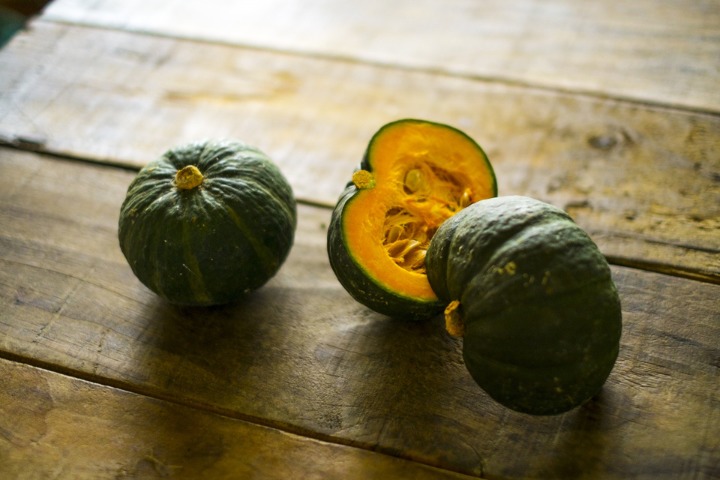
Image Credits: cheetah
Pumpkin is an Autumn favourite all around the world, and Japan is no exception to that. And while it technically is classed as a fruit, it definitely deserves a mention here!
Japan has its special variety of pumpkin, smaller than the pumpkin you may be familiar with. It has a green skin, and when cooked, the flesh inside remains reasonably tough, which makes it perfect for tempura. When put in hot soup, such as houtou udon, the pumpkin does not crumble, so you can easily pick it up with chopsticks. As the days become cooler, Pumpkin soup is a great option to help warm yourself up!
Lotus Root
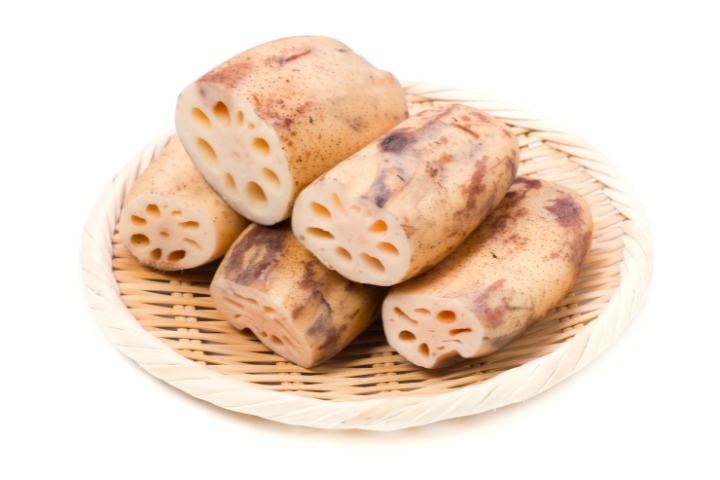
Image Credits: Canva
When I think of a lotus, the pink flower that floats on top of the water comes to mind first, but the lotus root is the stem of the plant found at the bottom of a pond. Japanese people are very good at ensuring nothing goes to waste, and it is common to find lotus root in Japanese dishes and vegetable sections of the supermarket.
For those with trypophobia, it may be challenging to look at this vegetable, thanks to its many holes on the surface. I was surprised to find out it can be eaten raw, but I have not yet tried it that way (have you?). I prefer it in a stir fry with spices or fried in a tempura batter. When cooked right, it still has a nice crunch to it.
Burdock Root

Image Credits: Canva
Burdock root is very good for your health and has been used in traditional medicine for hundreds of years in East Asia. It is a natural dietary fiber and contains powerful antioxidants. With all the benefits that burdock root holds, it comes as no surprise that Japanese people incorporate it into their regular diet.
You’ll often find it in a side dish like miso soup and my favourite, kinpira gobou. The recipe calls for soy sauce, sugar and sesame seeds. Any recipe that uses sesame makes it automatically delicious, and it is very moreish. Kinpira gobou also contains the sweet and crunchy autumn vegetable carrot, which compliments burdock root’s earthy and soft texture. I should mention this dish is usually vegan-friendly, too! Although the look of burdock root may not seem appealing, it’s worth giving it a try.
Taro
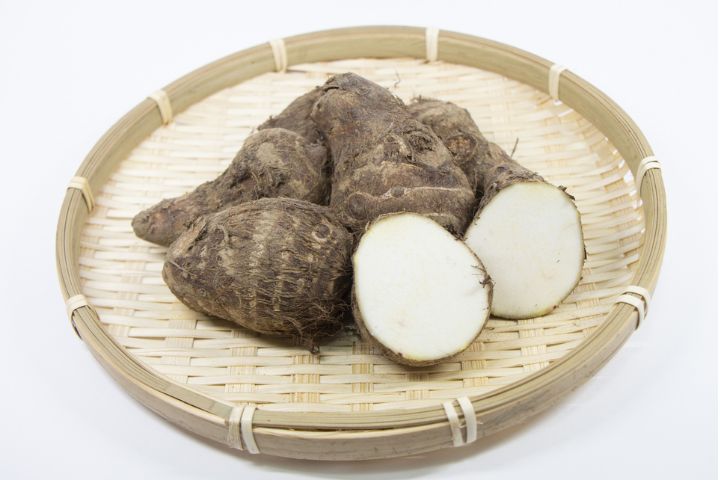
Image Credits: HiC
I often associate taro with bubble tea and taro balls, and I had never actually tried the vegetable in its original form until I came to Japan. I had this image of the taro plant being all purple, but it has light purple-coloured flesh and brown skin. The best way to eat taro is by stewing it in a broth containing soy sauce, mirin, cooking sake, and dashi on a stovetop. After cooking it and soaking in the flavours, the taro turns brown and soft. It has quite a mushy texture, so I wasn’t sure if I liked it at first, but it grew on me. Stewed taro is best served with a hot bowl of rice.
Mushrooms

Image Credits: Gaimu
The various types of mushrooms that exist in Japan are unique, and while not technically a vegetable, you will still find multitudes of Japanese mushrooms in the vegetable section of supermarkets! Although I can find button mushrooms that I often see back in Australia, I prefer to eat the Japanese kinds, such as enoki, shimeji, and king oyster mushrooms. The combination of soy sauce and butter is often used for snacks in Japan, and it works great with their mushrooms, too, as they soak up the juices in the frypan. Hot pot becomes a great option to stay warm as the weather becomes cooler, and a favourite topping to add is mushrooms, especially enoki.
How Will You Use Japanese Autumn Vegetables in Your Meal?
Autumn vegetables are readily available at any supermarket. We’ve listed a few ideas above on how to add them to your meals. These vegetables have great health benefits and are an excellent addition to a balanced diet. How will you make use of these popular vegetables this season?
Related Articles:
- Vegetarian Staples Convenience Stores in Japan
- Places to Visit This Year in Japanese Autumn to Avoid the Crowds
- The Best Seasonal Japanese Sweet Potato Treats This Fall
The Best Seasonal Japanese Sweet Potato Treats This Fall
Featured Image Credits: Canva

